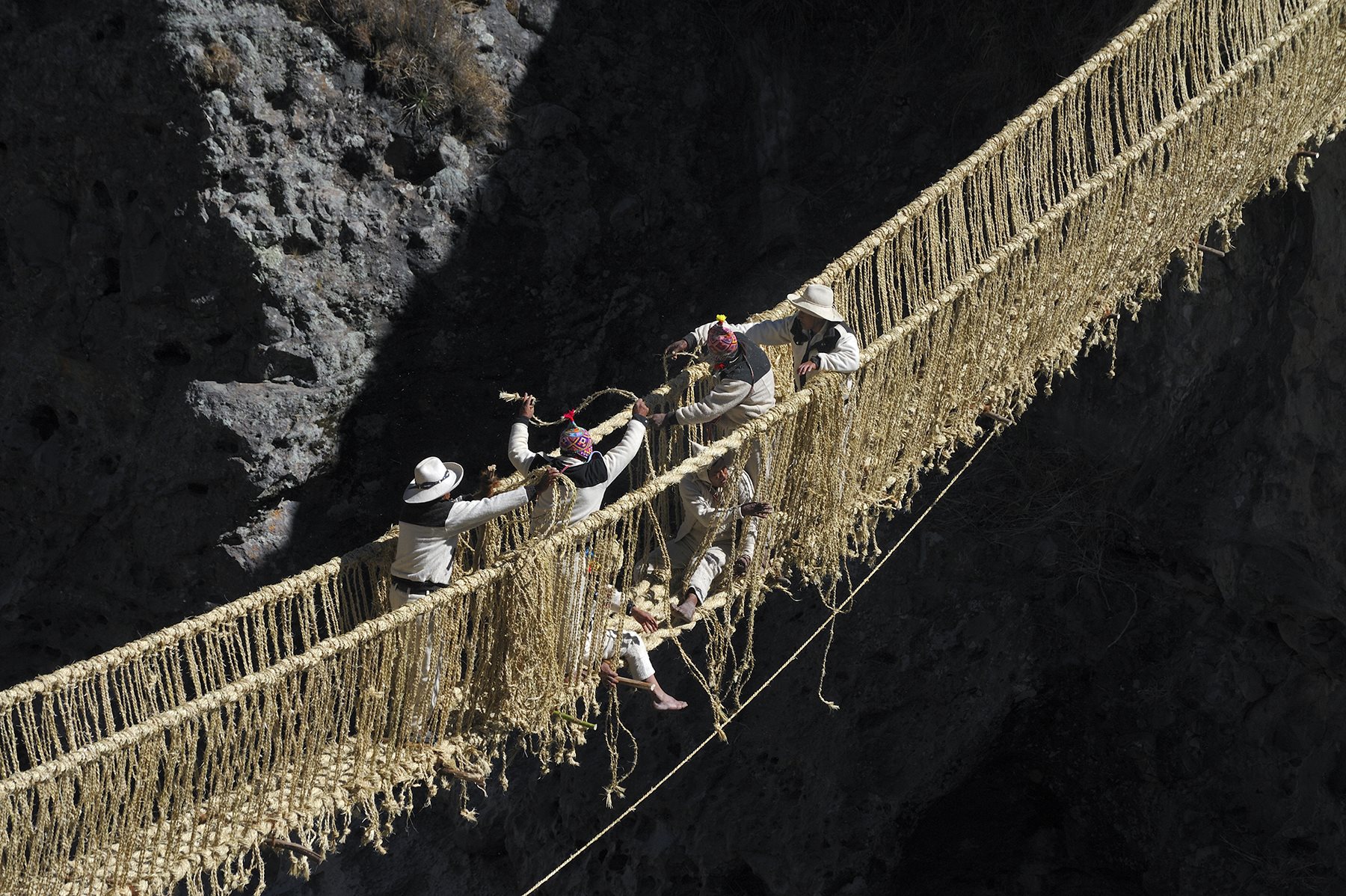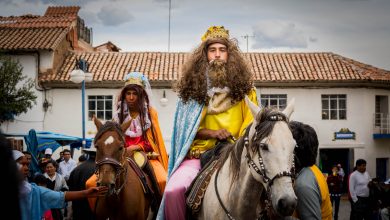The Way of Renewal and the Q”eswachaka Bridge

Bridges, provide connection between places, avoiding long and arduous travel down deep gorges, shorten distances, provide great views and reduce risk. Who was the daring genius that originally thought of the idea to span a river by walking through the air on…grass?
Q’iswa Chaka is a bridge built of grass, rebuilt each June. Yesterday, it was completed again, spanning not only the Apurimac (the apu or god that speaks) River but also building a bridge of time and community.
Who were these people who had the ingenuity to build a bridge of straw? We do not know their names; they are lost to us. The idea of the suspension bridges appeared in the fringes of the Himalayas area we now call Afghanistan. Unless you believe in pre-Columbian transoceanic contact, bridges developed about the same time in South America.

Last week, I was writing about fique, and learned that the suspension bridge on the Inca highway west of Cusco was allowed to fall into disrepair and was lost to antiquity. This bridge was the first documented suspension bridge in the Americas, dating well before the 15th century.
The bridges are interesting for many reasons. They are structures that require great skill to build. They must be maintained by the entire community. In Quechua, allyu is the word used for comminutes who share a common goal or focus, according to Catherine Allen in “The Hold Life Has” She defines mink’a, or the communal work that is done in the bridge maintenance.

Four communities come together to make the rope that is necessary for the bridge. Each family must bring the small rope that will be wound into the larger rope which will then be braided into the cables that make up the main supports of the bridge.
The old bridge is used to pull the first cables of the new bridge, which are then anchored to stone just as they were anciently. Many people must stretch the rope as taut as possible. After the cable is secured, the old bridge is cut away and allowed to fall into the river. The other cables are pulled into place, and the handrails and floor are woven in. Master bridge builder, Victoriano Arizapana starts from one side of the bridge, while Eleutario Ccallo Tapia starts from the other. When they meet , a shout goes up that the bridge if finished. Dancing and music follow the work.
Days before the bridge building, the grasses are gathered and allowed to dry. They must then be softened by pounding them, breaking the fibers down and allowing them to be worked. They are soaked and twisted into rope. Families work together, with everyone doing a part. The work is difficult and leaves blisters on your hands, according to one man making rope.
The current bridge master is Victoriano Arizapana, who learned the craft from his father. He started working on the bridge in his early teens. He is internationally recognized as a master bridge builder, using engineering skills of the Inca.
He only went to school through the 4th grade. He said, “Who would have helped my dad if I had stayed in school?” For three hundred years the oldest sons in his family have worked the bridge. The position of lead bridge master is a birthright of the oldest son. His oldest son, Vidal works in Lima. His younger son, Yuri, wishes to go to school. There is tension between the old ways and modernity. A modern bridge is near the traditional one, yet the traditional bridge is maintained using traditional methods.
The bridge is very important, and rituals also accompany the reconstruction each year. The bridge has a spirit of its own and is considered an Apu. The people are careful not to offend an Apu, and wish to remain in an Apu’s good graces.
This bridge remains an important part of the community bridging the generations from father to father back to the time of the Incas incredible engineering feats.




